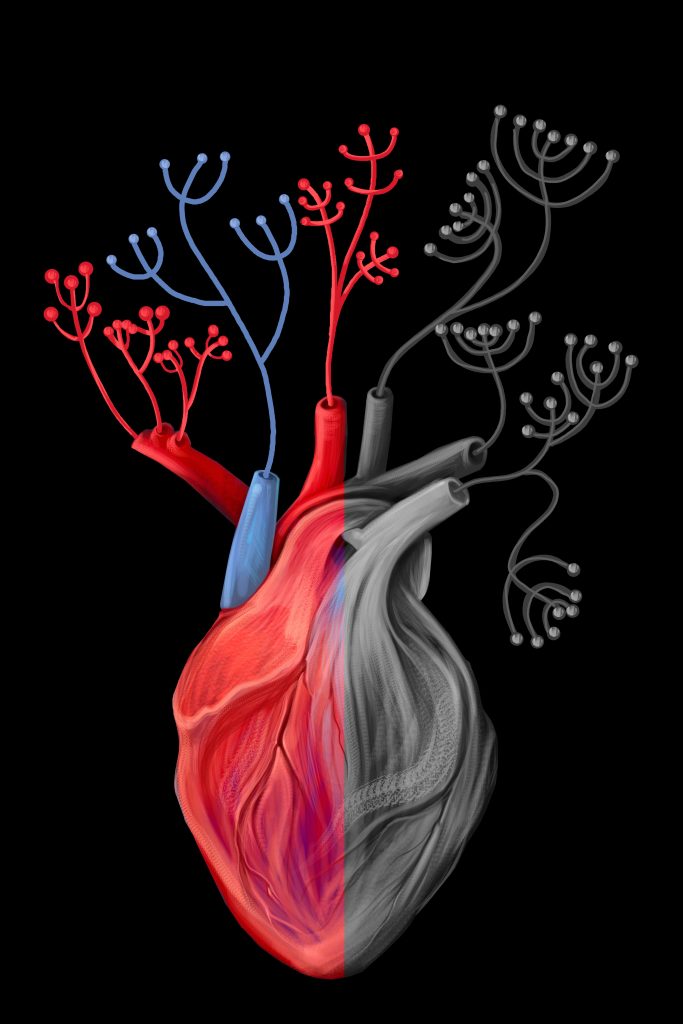L'osteopathy is based on a unique philosophy of care that views the body as a coherent whole capable of self-regulation. Since its creation at the end of the XIXᵉ century by Andrew Taylor Still, this discipline has been based on five major principles that guide the practice of each osteopath. These pillars explain both the specificity of osteopathy and its effectiveness in treating a large number of functional disorders.
Let's discover 5 fundamental principles of osteopathy.
1. The body is a unit
The first principle of osteopathy is that the human body functions as an indivisible whole. Its different parts - bones, muscles, organs, nervous system, blood circulation - are closely linked and interdependent.
An imbalance or restriction of mobility in one area can have repercussions in another part of the body. For example, poor posture can cause headaches, or a digestive problem can affect back mobility.
Osteopaths don't just treat the painful area: they look for the real cause of the imbalance and consider the patient as a whole, including their lifestyle, stress and environment.
2. Structure governs function
The second principle is based on the close link between the structure of the body (bones, joints, muscles, tissues) and its function (movement, circulation, breathing, digestion...).
When a structure is disrupted - for example, a locked joint or an over-stretched muscle - its function is compromised. This can lead to pain, inflammation or dysfunction.
The osteopath, through his manipulations and mobilisations, restores the mobility of the structures so that the function can once again be exercised correctly. This explains why osteopathic treatment can improve musculoskeletal pain as well as certain digestive or respiratory disorders.

3. The artery rule is absolute
Andrew Taylor Still insisted on the importance of blood circulation in health. This third principle of osteopathy reminds us that for a tissue to remain healthy, it must receive a sufficient supply of blood, oxygen and nutrients, and be able to eliminate its waste correctly.
Restricted mobility, muscular tension or joint blockages can disrupt this circulation. By restoring freedom to the tissues, the osteopath encourages better vascularisation and therefore a better capacity for regeneration.
This principle is not limited to blood: it also applies to lymphatic circulation and the nervous system, which are essential to the body's overall balance.
4. The body has its own capacity for self-regulation
One of the major foundations of osteopathy is confidence in the body's natural ability to heal itself. heal himself. The osteopath's role is not to 'correct' in an artificial way, but to remove the obstacles that prevent this self-regulation.
Through precise movements, he restores mobility, reduces tension and promotes overall balance, enabling the body to restart its natural repair mechanisms.
This is why osteopathy can be beneficial in both prevention and treatment: it optimises the body's ability to maintain its health over the long term.
5. The law of the nerve: the central role of the nervous system
The fifth principle, often added to the first four, highlights the essential role of the nervous system in health. The central and peripheral nervous systems control all the body's functions: motor skills, sensitivity, digestion, breathing and immunity.
Compression, irritation or tension in the surrounding tissues can disrupt nerve transmission. Osteopathy, by re-establishing the mobility of structures and reducing tension, enables better nerve communication and therefore optimal functioning of the body.
Why are these 5 principles essential?
These principles are not fixed theoretical rules, but rather guidelines that guide each consultation. They explain why osteopathy takes a holistic view of the human body. comprehensive and personalised of each patient.
Unlike some approaches that focus solely on the symptom, osteopaths focus on :
- understand the patient's history,
- identify the root causes,
- treat imbalances,
- and prevent recurrences.
In this way, osteopathy is not limited to the treatment of occasional pain, but contributes to a lasting improvement in health and quality of life.
In a nutshell
The 5 principles of osteopathy - The unity of the body, the structure-function link, the fundamental role of circulation, the capacity for self-regulation and the importance of the nervous system - all form the basis of this discipline. They enable osteopaths to treat each patient as a whole, with an approach that is at once scientific, humane and respectful of the body's natural mechanisms.
Thanks to these foundations, osteopathy has become an essential manual therapy, both in the prevention and treatment of many functional disorders.






